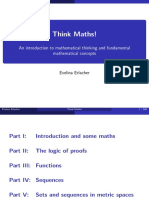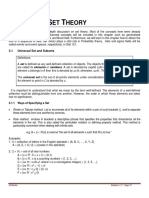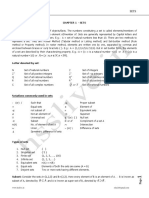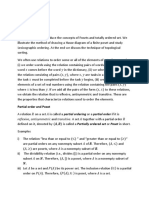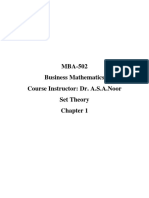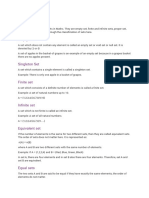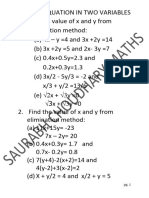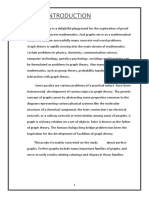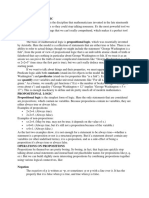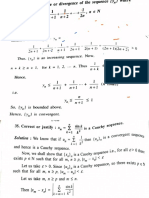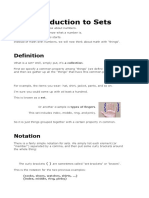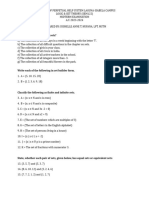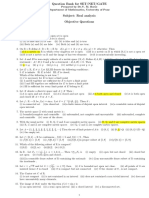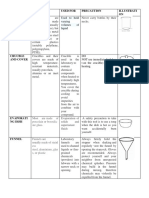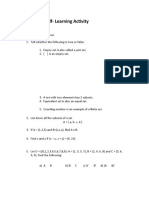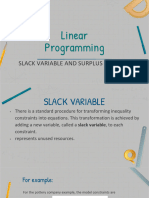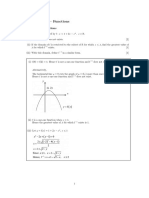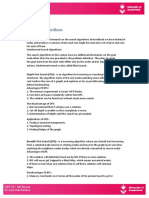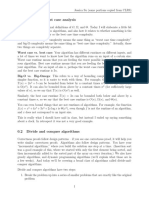0% found this document useful (0 votes)
442 views11 pagesSets and Subsets
This document discusses four basic concepts of sets:
1. A set is a collection of well-defined objects. Elements belong to a set and subsets contain elements of another set.
2. There are various types of sets such as finite, infinite, unit, empty, equal, equivalent, universal, joint, and disjoint sets.
3. Sets can be described using a roster method by listing elements or a rule method by stating common characteristics. Operations on sets include union, intersection, difference, and Cartesian product.
Uploaded by
yaoi yuriCopyright
© © All Rights Reserved
We take content rights seriously. If you suspect this is your content, claim it here.
Available Formats
Download as DOCX, PDF, TXT or read online on Scribd
0% found this document useful (0 votes)
442 views11 pagesSets and Subsets
This document discusses four basic concepts of sets:
1. A set is a collection of well-defined objects. Elements belong to a set and subsets contain elements of another set.
2. There are various types of sets such as finite, infinite, unit, empty, equal, equivalent, universal, joint, and disjoint sets.
3. Sets can be described using a roster method by listing elements or a rule method by stating common characteristics. Operations on sets include union, intersection, difference, and Cartesian product.
Uploaded by
yaoi yuriCopyright
© © All Rights Reserved
We take content rights seriously. If you suspect this is your content, claim it here.
Available Formats
Download as DOCX, PDF, TXT or read online on Scribd
/ 11

